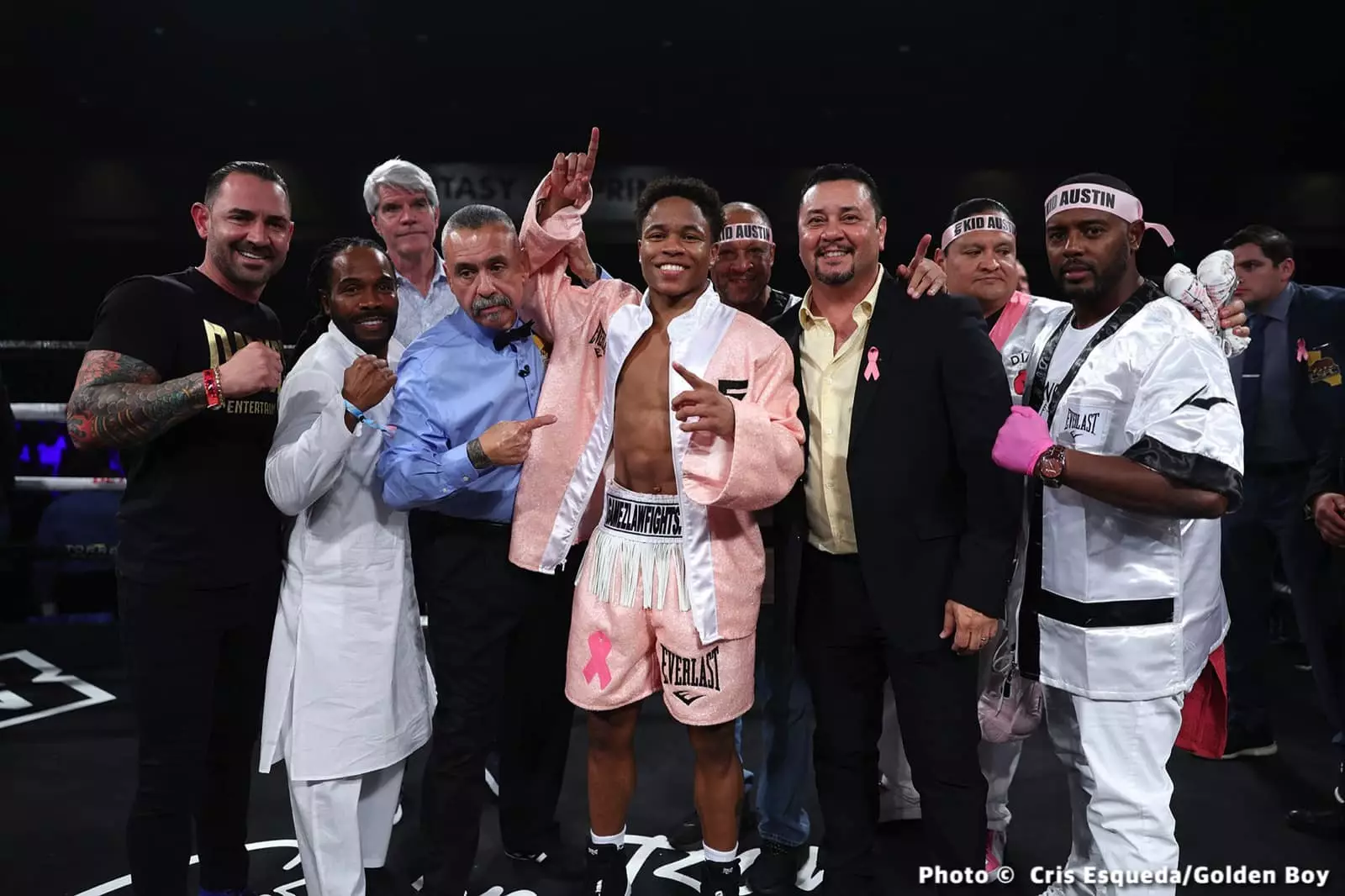In the ever-evolving world of professional boxing, decisions made by promoters can significantly impact the careers of their fighters. Recently, Oscar De La Hoya, head of Golden Boy Promotions, unequivocally rejected the prospect of his boxer, Floyd “Kid Austin” Schofield—an undefeated lightweight contender—facing the WBC lightweight champion, Shakur Stevenson, on February 22 in Riyadh. The assertion that Schofield, a promising talent at just 22 years old, could face a formidable opponent like Stevenson—a 2016 Olympic silver medalist with an impressive record—has raised eyebrows and sparked criticism across the boxing community.
De La Hoya’s comments, particularly in light of the announcement that he had not sanctioned such a fight, reveal much about the strategic considerations that underlie matchmaking in boxing. It is not merely about finding fighters who are ready to face one another but involves protecting a boxer’s career trajectory. In this case, such a move might jeopardize Schofield’s aspirations instead of elevating them.
The February 22 card is anticipated to be a colossus within the sport, highlighting the increasing appetite for boxing events in the Middle East. The idea of Schofield stepping into the ring against Stevenson sparked ridicule online, with many boxing fans expressing disbelief at the matchmaking choice. Schofield’s fans debate whether this potential fight is a realistic step or a significant miscalculation, given his current ranking and potential future title shots.
Instead of facing Stevenson, it would appear much more beneficial for Schofield to pursue bouts against other credible opponents, like Gervonta ‘Tank’ Davis. Such a match could not only provide a better financial incentive but also challenge Schofield against a champion at a more opportune time in his career. The logic backs De La Hoya’s reluctance; facing Stevenson could leave Schofield exposed, particularly since he would be entering the ring with a fighter whose experiences and accolades greatly outshine his own.
De La Hoya’s public disagreement with Eddie Hearn—Stevenson’s promoter—has drawn attention to the contrasting philosophies within professional boxing promotion. While De La Hoya criticizes Hearn for allegedly “stooping to the lowest level” by targeting an inexperienced prospect instead of seasoned opponents, it begs the question: what does it mean to build a fighter’s career effectively? Is Hearn’s strategy to pit Stevenson against rising talents an attempt to establish dominance or to showcase any flaws Stevenson might possess under pressure?
The allegation that Hearn does not know how to build a career resonates with many in boxing, but whether this is true remains contentious. The twin goals of presenting exciting fights and nurturing emerging talents are difficult to balance, and it seems both promoters are vying for different aspects of boxing’s ultimate goal—establishing champions.
The fallout from this promotional spat has not only left fans unsettled but has also ignited comments from Stevenson himself, indicating that he sees Schofield’s promoter’s decisions as reflective of insecurity rather than actual capability. The exchange of barbs online, with Stevenson labeling De La Hoya’s management decisions as unworthy, adds another layer to this complex rivalry within lightweight boxing.
What remains clear from this discord is that the world of boxing is rife with competition, not just in the ring but in negotiation rooms and promotional contracts. De La Hoya’s strong stance is a signal that he is protective of his fighter’s development, and Stevenson’s counter-argument highlights the pressures and expectations placed on young contenders. As both sides navigate this tumultuous landscape, one thing is certain: fans are eagerly awaiting the next moves.
Moving forward, boxing stakeholders must address the intricacies surrounding fighter match-ups with an emphasis on growth, safety, and entertainment. Given the stakes involved, it is essential that both promoters leverage their resources effectively to provide the best opportunities for their fighters. The rivalry between Stevenson and Schofield underscores a larger narrative in boxing—one that balances ambition with the reality of marketable match-ups.
In the days leading up to the proposed fight date, dialogue between promoters, fighters, and fans will continue to shape the future landscape of boxing. Ultimately, how De La Hoya and Hearn choose to navigate their respective paths could define the careers of not only their fighters but the sport’s broader narrative in 2024 and beyond.


Leave a Reply